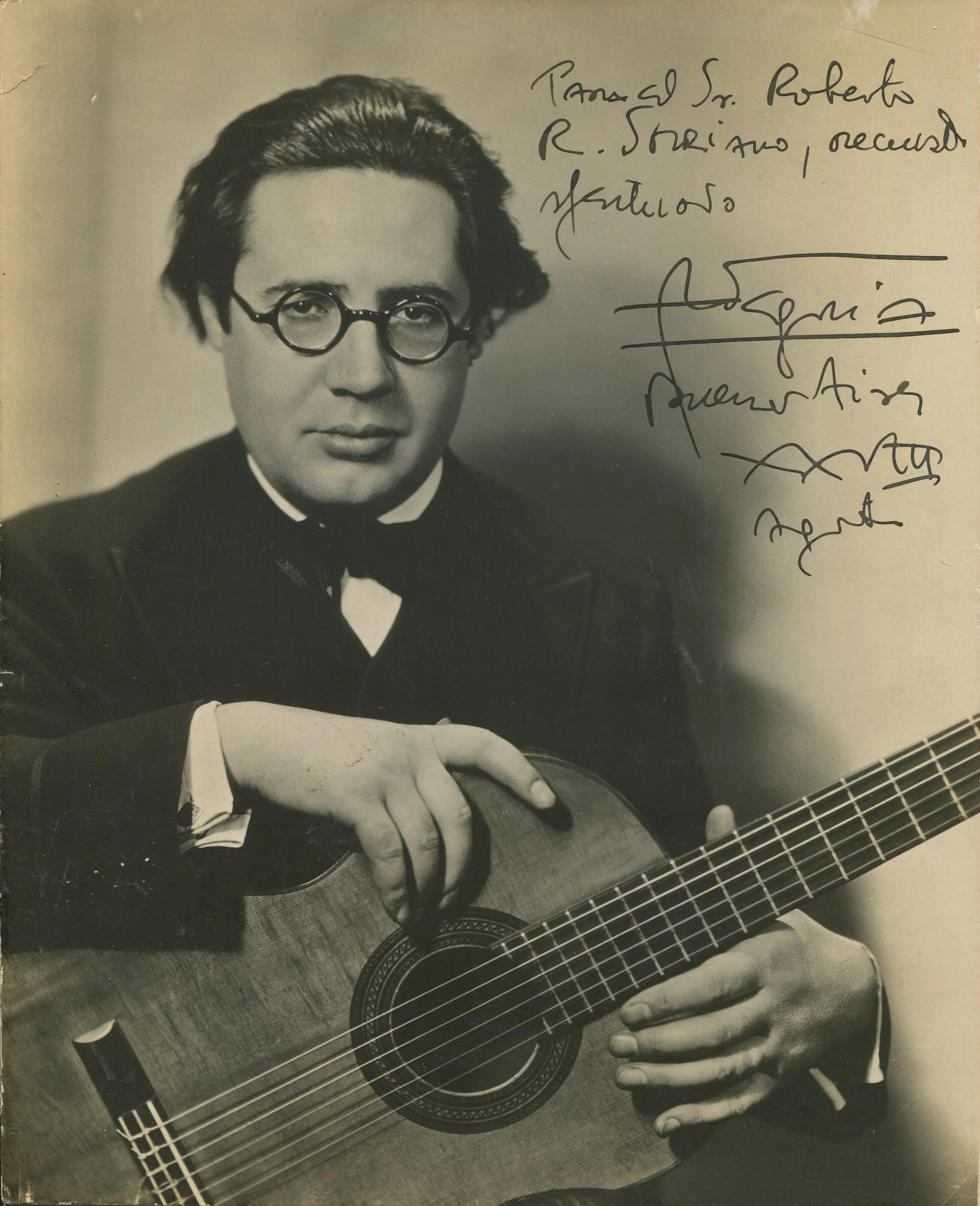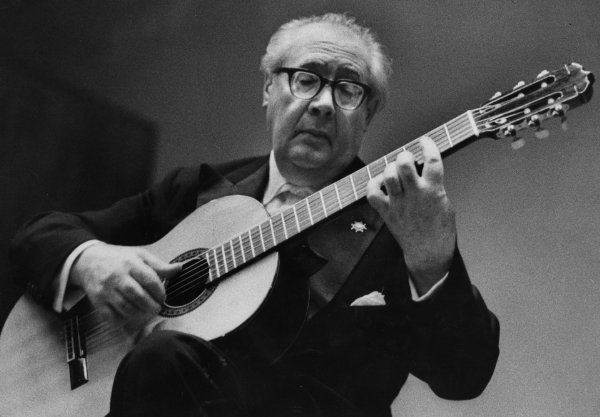RIP Julian Bream
One of my greatest and favourite guitar heroes passed away peacefully in his sleep yesterday aged 87 - Julian Bream CBE.
Moe mai ra e te Rangatira…(Sleep, oh chief)
Takoto mai, takoto mai, takoto mai…(Lie, lie, lie)
Haere ki runga i to waka rererangi…(Travel aboard your heavenly vessel)
Haere ki nga whetu kei runga i to po roa, to po nui, te po tapu…(Go to the many stars of the long night, the great night, the sacred night)
Haere, haere, haere…(Depart, depart, depart…)
Julian Bream was what I would like to call a ‘Musician’s musician’. He was everything that many of us aspire to be - a virtuoso; a gentleman and a scholar; an indefatigable tour de force in the guitar and lute world; a transcriptionist par excellence; and an all-round good chap.
I had the incredible privilege of seeing Julian perform in Napier in 1988 when I was in my first year at high school. Unfortunately, I was so new to the guitar that I had scarcely a clue as to who he was and what he was playing. I do remember that he played All in Twilight by the Japanese composer Toru Takemitsu (I believe it had been commissioned the year prior).
When I was undertaking my performance major in classical guitar at Victoria university in Wellington I would often pull out a vinyl recording of Julian Bream and listen to him playing the Concierto de Aranjuez by Joaquin Rodrigo. I had never heard anything so exquisite apart from Segovia playing J. S. Bach’s Chaconne. Even today rarely more than a few days go past without me listening to Julian playing a piece in his own way - the Julian Bream way.
To me the way Julian played was unique amongst all players. His thunderous pizzicato in the beginning stanza of Granados’ La Maya de Goya, or the sultry sul tasto in Turina’s Fandanguillo are truly unforgettable displays of his extraordinary depth of musical understanding. The tonal variations and his idiosyncratic approach to phrasing and interpretation, salient in a world so full of amazing players.
When I was a bit younger I was in camp Williams because I just couldn’t believe his technical command so I tended to model my playing to mimic John (falling way way short). However, as I have aged I have gone back to Julian and analysed many of his transcriptions and increased my admiration of his approach and sound. The ending of my performance of Serenata Espanola by Malats is totally JB. I listened to his performance several times and then transcribed it by ear. To my knowledge nobody ends that piece like Julian does.
I am happy and unimaginably thankful that JB left a massive lexicon of music for lute and guitar for us to enjoy through the coming years.
Please feel free to comment and share your experience with Julian and his music below.
Learning Classical Guitar
Classical guitar vs Acoustic guitar vs Electric guitar. Isn't it all just guitar? Yes & No. Read on...
Introduction
In this article I'd like to share my thoughts on learning classical guitar. Before I do I think it could be important to explain the term 'classical guitar' and how it differs from say 'electric guitar' or 'acoustic guitar'.
Fundamentally there are no differences! Guitar is guitar. They all have strings and they all need to be played using our fingers.
Acoustic vs Classical - what's the difference?
For me the primary difference is the type of music that is played on the instrument. Of course there will always be crossover pieces that can work on all 3 types of guitar but for the most part the music that has been written for classical guitar is written for the nylon string guitar.
As that type of guitar used gut strings before nylon strings came along has been around for around 200 years, any music that was written during that time could probably be considered 'classical guitar music'.
Therefore if you are learning classical guitar there is every chance that you will be playing music that was written a long time ago in Europe. Pieces by composers such as Mauro Giuliani, Francisco Tarrega, Fernando Sor, and Johann Sebastian Bach will be in your repertoire; you will be learning to use at least 4 fingers of your picking hand and you definitely won't be using a pick or plectrum.
Another big difference is the use of polyphony which simply means playing more than one note at a time in the form of a melody, supporting notes, & a baseline. The truth is that this style or playing can be found in both electric and acoustic guitar but rest assured that the original style developed on the nylon or classical guitar and was transferred across once those two types of guitar found popularity in the early part of the 20th century.
My reason for learning classical guitar was pretty simple - I loved being able to play an entire piece by myself without a band! I also found it intellectually rewarding and I just loved hearing that music played by the greats such as Julian Bream, John Williams, & Andres Segovia.
Beware because learning classical guitar is extremely addictive and often players from other genres will come to the classical guitar and fall in love with it and sometimes not return to their previous styles. It matters not for the joy is in the journey and unlocking all the wonderful possibilities that exist on this 'mini orchestra'.
If you are considering learning classical guitar I suggest finding a great teacher and getting yourself a couple of good foundational books. Online guitar lessons are another marvellous way of gaining knowledge and accelerating your progress. I teach by Skype so be sure to check out the 'Lessons' tab in the menu bar for more information.
Andres Segovia - Segovia at Los Olivos Documentary
Enter Andres Segovia - monster player + total badass.
Introduction
Today's post is about the most famous of all classical guitarists - Andres Segovia. I've been watching a few videos that are floating around on YouTube and despite his popularity and influence on almost all classical guitarists I discovered that I hadn't seen his documentary 'Segovia at Los Olivos'.
If you have a spare 50 minutes or so I strongly suggest that you sit yourself down and take the time to watch it. For a start you get to see the absolutely massive house that Segovia commissioned for himself and his wife to live in and you get to see a somewhat forlorn donkey meandering through an olive grove oh and you get to see & hear Segovia jamming a few tunes in the comfort of his own pad - that in itself is pretty awesome. For those of you that still have VHS players you can purchase a tape here instead of watching it on YouTube:
Watching this video triggered my memory of an Andres Segovia cassette tape that I would listen to many years ago.
The tape is long since gone but the memory of the extraordinary sound and musicianship lingers on. I do remember that the tape had the infamous Johann Sebastian Bach 'Chaconne in D-minor' on it. At that time I couldn't really appreciate the sheer domination of technique, memory, endurance, and musicality that anyone would need to possess to play this piece.
The Outspoken One
I must admit to moving away from listening to Andres Segovia recordings after hearing John Williams express his opinions about Segovia's domineering personality many years ago in his documentary 'The Seville Concert'. Segovia's masterclasses also seemed to show an intolerance of alternative interpretations of his transcriptions. I remember him mercilessly chastising a wonderful guitarist for playing one of his transcriptions of Bach's Fugue in E minor for using his own fingerings rather than Segovia's.
However, I find that I have put this to the side and returned to just kicking back and listening to some of the most beautiful classical guitar music that you're ever likely to hear. Los Olivos seems to show a different side to the larger-than-life legend.
Watching him petting a dog, enjoying a cup of tea with his wife, and telling his story of how his relationship with the famous Ramirez guitar makers began was awesome. Amazingly it was Segovia's first summer in 35 years that he spent at home just chillaxing rather than being out on the world stage in some far away exotic land mesmerising people with his personality and his playing.
Anyway that's all from me today. Time to start on the Chaconne... after a cup of tea! Now it's time for you to go and check it out but before you do I should mention that the opening piece is 'La maya de Goya' and I'll have a tutorial and classical guitar tabs and classical guitar sheet music available on the website very soon!










